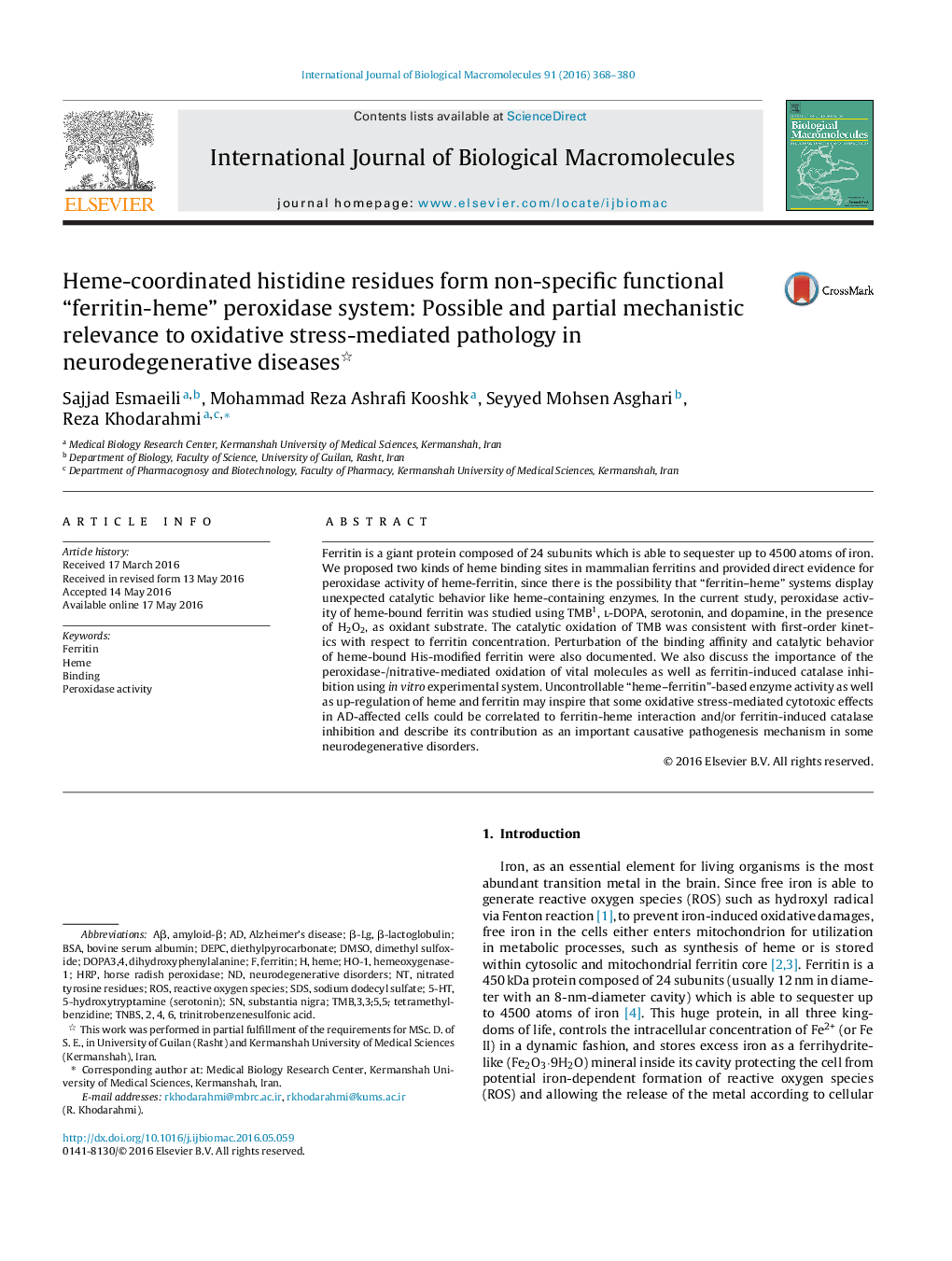| Article ID | Journal | Published Year | Pages | File Type |
|---|---|---|---|---|
| 1985638 | International Journal of Biological Macromolecules | 2016 | 13 Pages |
•Direct evidence of peroxidase activity of heme-bound ferritin is provided.•His-modified ferritin shows much lower peroxidase activity.•His residues at 3-D pore of the protein are assumed to be possible heme-pulling factors.•Up-regulation of heme/ferritin may describe causative another pathogenesis mechanism of Alzheimer’s disease.
Ferritin is a giant protein composed of 24 subunits which is able to sequester up to 4500 atoms of iron. We proposed two kinds of heme binding sites in mammalian ferritins and provided direct evidence for peroxidase activity of heme-ferritin, since there is the possibility that “ferritin–heme” systems display unexpected catalytic behavior like heme-containing enzymes. In the current study, peroxidase activity of heme-bound ferritin was studied using TMB1, l-DOPA, serotonin, and dopamine, in the presence of H2O2, as oxidant substrate. The catalytic oxidation of TMB was consistent with first-order kinetics with respect to ferritin concentration. Perturbation of the binding affinity and catalytic behavior of heme-bound His-modified ferritin were also documented. We also discuss the importance of the peroxidase-/nitrative-mediated oxidation of vital molecules as well as ferritin-induced catalase inhibition using in vitro experimental system. Uncontrollable “heme–ferritin”-based enzyme activity as well as up-regulation of heme and ferritin may inspire that some oxidative stress-mediated cytotoxic effects in AD-affected cells could be correlated to ferritin-heme interaction and/or ferritin-induced catalase inhibition and describe its contribution as an important causative pathogenesis mechanism in some neurodegenerative disorders.
Graphical abstractFigure optionsDownload full-size imageDownload as PowerPoint slideSynopsis: ferritin is a giant protein composed of 24 L/H subunits. In this study, we provided direct evidence of peroxidase activity of heme-bound ferritin. His-modified ferritin also showed much lower peroxidase activity; inspired us to assume that His residues at 3-D pore of the protein are possible heme-pulling factors and form peroxidase-like active site environment with contribution of heme. Perhaps, up-regulation of heme and ferritin could describe another important causative pathogenesis mechanism of AD.
